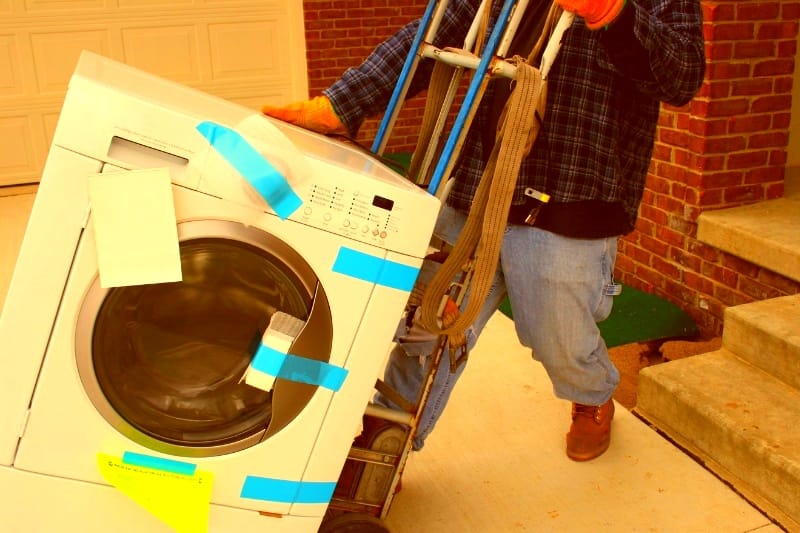
Moving to a new home can be an exciting yet challenging endeavour. Whether you’re relocating across the city or to a different state, the process involves careful planning and organization. One of the often overlooked but essential appliances that need special attention during a move is the washing machine. Properly storing your washing machine is crucial to ensure its safety and functionality upon arrival at your new abode. In this blog post, we’ll explore the do’s and don’ts of storing a washing machine when moving.
Do’s:
Clean and Dry Thoroughly: Before even considering storing your washing machine, it’s essential to give it a thorough cleaning. Remove any leftover detergent, lint, or debris from the drum, filters, and dispensers. Leave the door open for a while to allow any moisture to evaporate, preventing mold and mildew growth during storage.
Disconnect Properly: Ensure you disconnect the washing machine from all utilities following the manufacturer’s guidelines. Turn off the water supply and disconnect the hoses. It’s also a good practice to disconnect the electrical cord and secure it properly to avoid any damage.
Secure the Drum: To prevent damage during transit, secure the drum of the washing machine. This can be done by using the drum locking bolts or brackets that are often provided by the manufacturer. These prevent the drum from moving excessively and causing internal damage.
Protect the Exterior: Cover the washing machine with a protective sheet or moving blanket to prevent scratches and minor dings during transportation. Secure the cover with tape or straps to ensure it doesn’t come off during the move.
Use Original Packaging: If possible, use the original packaging to store your washing machine. Manufacturers design these boxes with adequate protection in mind. If you no longer have the original packaging, invest in sturdy moving boxes that are large enough to accommodate your machine with extra padding.
Pad the Interior: Place cushions or foam padding inside the drum to absorb any shock or vibrations during transportation. This will help protect delicate components and prevent internal damage.
Label Fragile: Clearly label the box or the machine itself as “Fragile” to alert movers and yourself to exercise caution when handling the appliance.
Keep Accessories Together: If your washing machine has detachable parts like hoses or lint traps, store them in a labelled bag and attach it to the machine or pack it securely inside the same box.
Don’ts:
Avoid Last-Minute Rush: Don’t wait until the last moment to start preparing your washing machine for storage. Properly cleaning, disconnecting, and packing it takes time, so plan ahead.
Don’t Forget the Manual: If you still have the manual that came with your washing machine, keep it handy. It might provide specific instructions for disconnecting, storing, and reassembling the machine at your new location.
Avoid Overlooking Levelling Feet: Some washing machines have adjustable leveling feet to ensure they sit evenly on the floor. Don’t forget to adjust or secure these feet before moving the machine to prevent wobbling or tipping.
Don’t Skip the Locking Bolts: If your machine came with drum locking bolts or brackets, don’t skip using them. These are specifically designed to immobilize the drum during transportation and can prevent significant internal damage.
Don’t Ignore Transportation Guidelines: If you’re hiring a moving company or transporting the machine yourself, don’t ignore proper guidelines for loading and securing appliances in the moving vehicle. Secure the machine to prevent shifting during transit.
Avoid Improper Stacking: If you’re stacking the washing machine with other items in the moving truck or storage unit, make sure it’s not at the bottom of a stack. Heavy items can crush the machine, causing irreparable damage.
Don’t Forget About Climate Control: If you’re storing your washing machine in a non-climate-controlled environment, such as a garage or storage unit, be cautious of temperature fluctuations. Extreme temperatures can affect the integrity of the machine’s internal components.
Don’t Rush Reinstallation: Once you arrive at your new home, don’t rush through the reinstallation process. Take your time to ensure proper setup, reconnection of utilities, and levelling to prevent operational issues down the line.
Storing a washing machine during a move requires careful attention to detail and a commitment to protecting this essential appliance. By following these do’s and don’ts, you can ensure that your washing machine remains in good condition during transit and is ready to serve you well in your new home. Proper preparation and handling will not only save you from potential repair costs but also ensure a smoother transition into your new living space.







